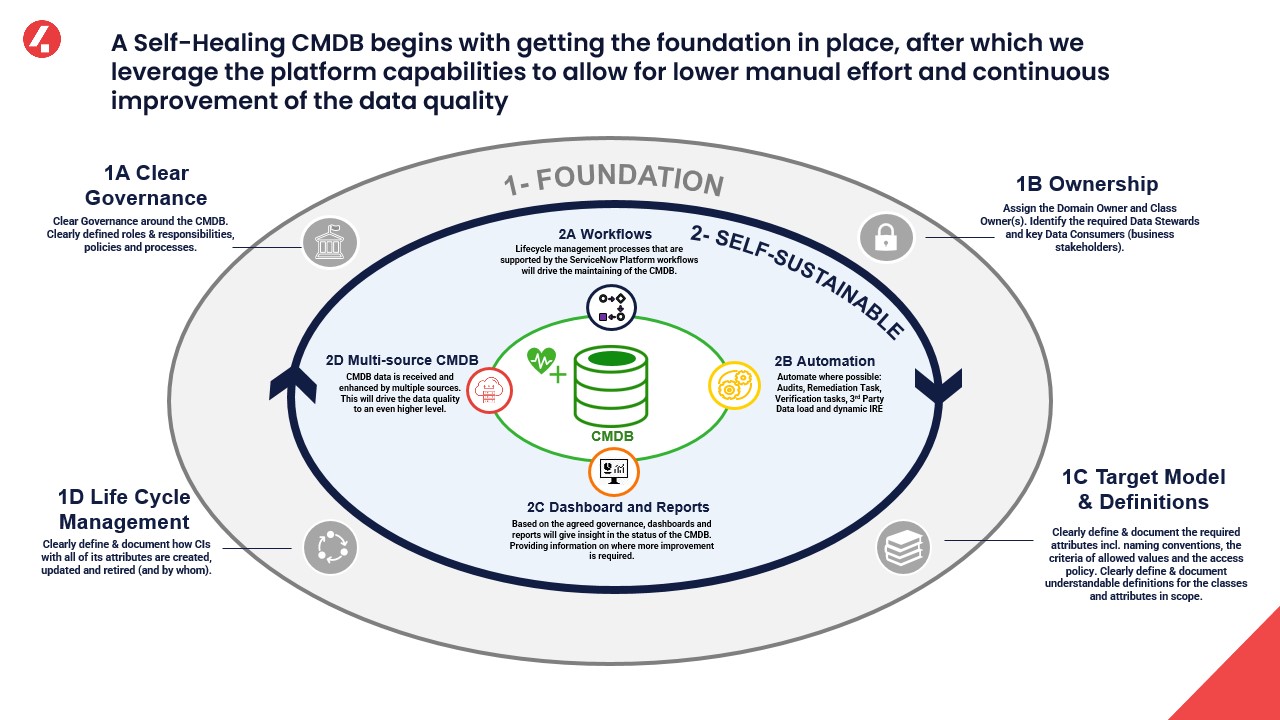Contact person
Elmer de Valk
Chief Executive Officer (CEO)
+31 (0)30 76 02 670

Recently, I was at a ServiceNow convention where the speaker on stage asked the audience a simple question: “If you have a high-quality CMDB, please raise your hand?“ Out of the >200 attendees, only 2 people raised their hands! The other >198 people looked at them in disbelief. The conclusion: in large enterprises today, high-quality CMDBs are a very rare phenomenon.
The situation described above could lead you to say that having a high-quality CMDB is simply not something worth pursuing. But the complete opposite is true! Simply put, if you don’t know what you have, you will not be able to manage it. A high-quality CMDB enables CIOs, IT Operations and other leaders to meet their objectives. The obvious benefits lie in the area of improving security, costs, performance, risk, stability, end-user happiness, etc.
What is often overlooked is the measurable waste related to not having a high-quality CMDB, like time wasted when you have to:
My advice: if you want to convince your leadership to invest, then build a solid business case based on the time that will be saved when having a high-quality CMDB.
Why is it so hard to implement a CMDB with high-quality data? During my conversations with senior IT leaders, my conclusion is that we (also at Plat4mation) have been stumbling into the same pitfalls over and over again:
A self-healing CMDB capability is built up from several components that are all needed to create the self-healing effect. But, it all starts with a solid foundation:

This was the first blog in a series, in which I share Plat4mation’s best practices to implement a high-quality CMDB. Stay tuned for more detailed stories where I zoom in on the various elements mentioned in this blog.



Sign up to our monthly Flow@Work Exclusive newsletter to get free access to our expertise and lots of tips and tricks to make work flow on the Now® Platform.